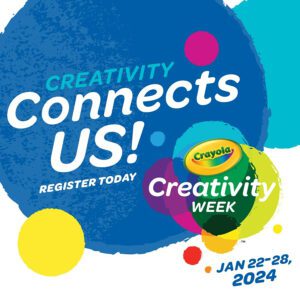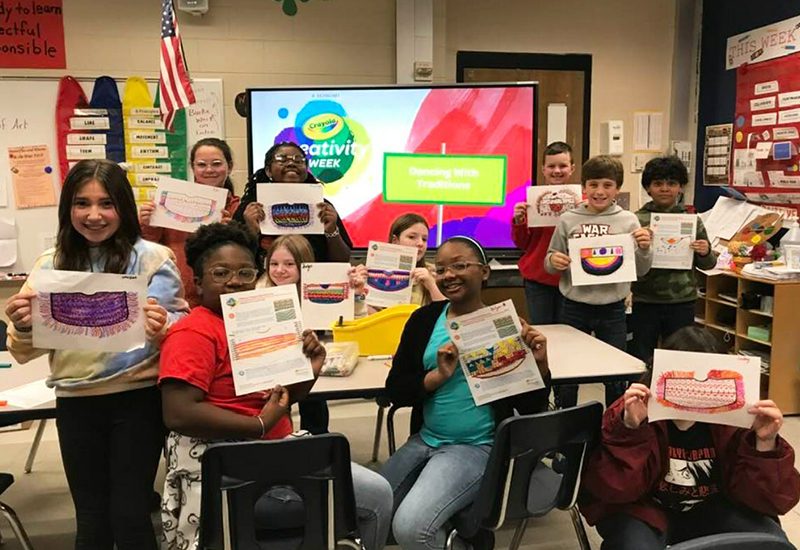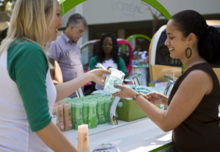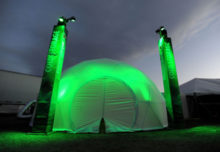Crayola’s just-wrapped “Creativity Week,” now in its third year, provides free learning resources for parents and educators to spark kids’ creativity in the classroom. But the brand’s evp of marketing, Victoria Lozano, says it’s not limited to art class.
“Where we see the most implementation is in classrooms, and it’s specifically focused on using creativity to help kids learn across subjects,” she says. “This is not about artistry; this is not about art class. It’s about using creativity to engage kids and help them learn across core subjects. We’re talking about literacy, math, social-emotional learning—all the things that schools are actually focused on and teachers are required to teach.”
EM’s sister publication, Chief Marketer, spoke with Lozano about Crayola Creativity Week, including how the brand develops the program, its target audience and marketing outreach, and how it measures success. Plus, take a look at Crayola Studios’ content play and the brand’s shift toward creating digital and out-of-home experiences.
 More Executive Q&As:
More Executive Q&As:
- Executive Q&A: The Strategy Behind Adobe on Main at Sundance Film Festival
- Q&A: Inside Google’s New ‘Inclusive Event Design Guide’ for the Industry
What’s the idea behind Crayola Creativity Week?
 Victoria Lozano, evp-marketing at Crayola: Crayola turned 120-years-old this year. The founders believed in this idea that creativity was a critical life skill, and that it was important not only to an individual child, but to a collective success of a country… That drove their mission and what we now articulate as a brand: helping parents and educators raise creatively-alive kids.
Victoria Lozano, evp-marketing at Crayola: Crayola turned 120-years-old this year. The founders believed in this idea that creativity was a critical life skill, and that it was important not only to an individual child, but to a collective success of a country… That drove their mission and what we now articulate as a brand: helping parents and educators raise creatively-alive kids.
Creativity Week focuses on fostering and inspiring creativity in the classroom. It is open to homes, whether it’s homeschooling or just homes that want to participate, but where we see the most implementation is in classrooms. This is not about artistry; this is not about art class. It’s about using creativity to help learn, engage kids, and help them learn across core subjects. So, we’re talking about literacy, math, social-emotional learning, all the things that schools focus on and teachers are required to teach.
What will make this a success from a branding and marketing perspective? And how are you measuring it?
VL: Since this program was born out of our mission as a brand, it is helping us deliver on that purpose. More quantitatively, it’s about impacting as many kids as we can. We look at the number of kids that are participating as a key metric. The program is turnkey; all the resources are easy to access and completely free, so this is not a revenue generating initiative. But at the same time, what want to make greater impact in the classroom, partner with educators and continue to build goodwill for the brand among this specific target.
Crayola is on back-to-school lists, and this is part of our ongoing partnership with the educators. Sometimes we have teachers who will sign up their classroom. But we also have schoolwide participation, when the entire school signs up and we get user-generated content and schools that make it into a schoolwide celebration.
Shifting gears, can you talk about Crayola Studios, and how it’s helping the brand from a marketing perspective?
VL: Our target as a brand and a business is trifold. We focus on kids, parents and caregivers, and educators. We just talked about the educator piece, but when you focus on kids and parents more pointedly, the best way to engage kids is through content that they enjoy. Crayola Studios started last year to formalize our focus on entertainment content that is consistent with our brand tenants, and to help kids develop creativity as a life skill.






